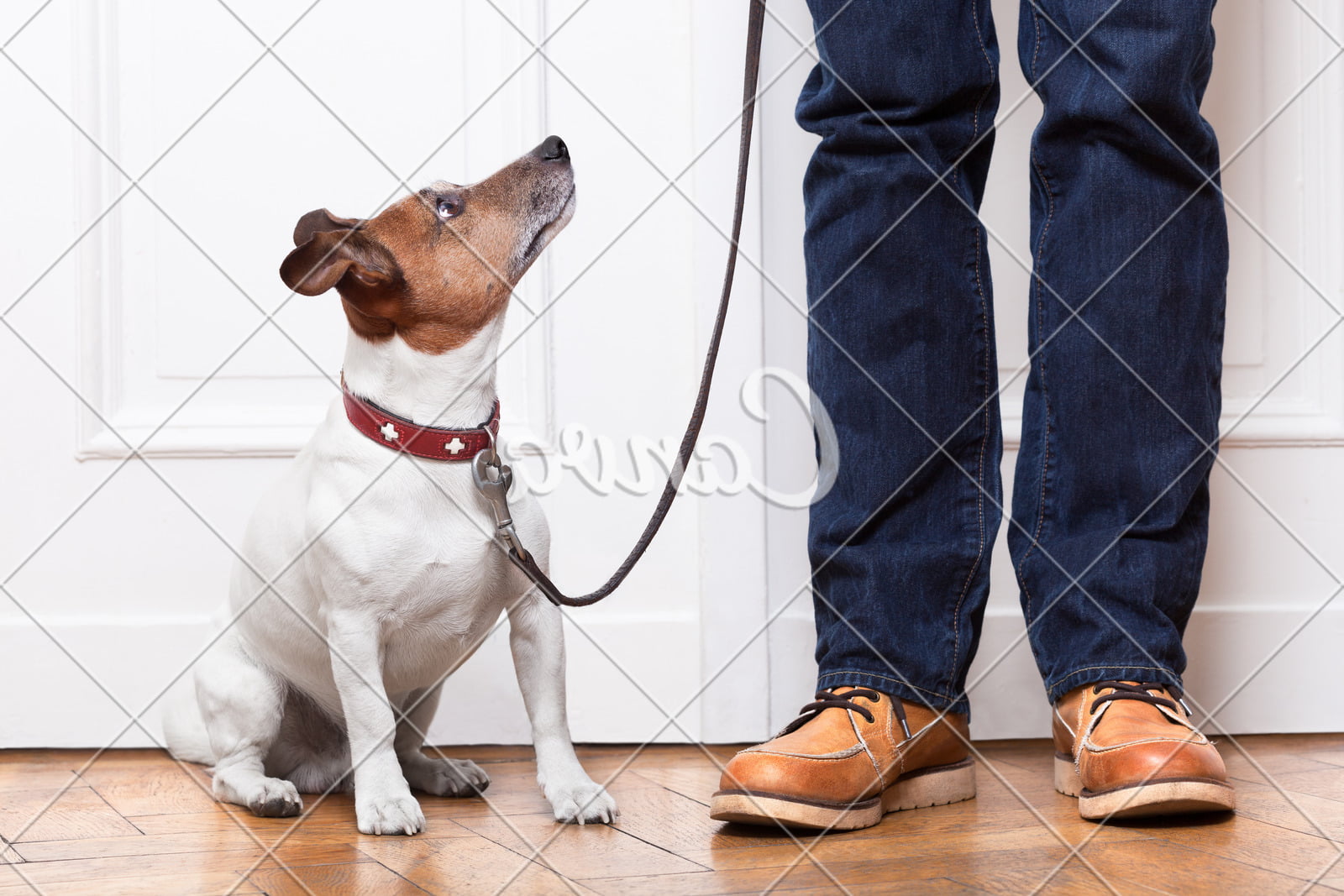Dogs have a natural instinct to bark, serving as a form of communication and expression. Understanding the purpose of barking is crucial when it comes to training your furry companion on which noises to bark at. The key is to teach your dog to differentiate between normal sounds and potential threats, ensuring they only bark when necessary.
When it comes to identifying noises that dogs typically bark at, it ranges from doorbells, alarms, or even the sound of someone approaching the house. However, not all noises require a response, which is why training your dog becomes essential. By giving them clear cues on what sounds warrant a bark and which don’t, you are helping them develop better judgment and control over their behavior.
Training your dog to bark at specific noises can be achieved through a step-by-step guide that focuses on positive reinforcement techniques. By using tools and resources specifically designed for noise training, you can effectively communicate with your pet and reinforce good behavior. While there may be challenges along the way, avoiding common mistakes and staying consistent in your approach will yield successful outcomes in the long run.
Types of Noises That Dogs Typically Bark At
Dogs have a natural instinct to bark as a form of communication, whether it be to alert their owners of potential threats or simply to express excitement. Understanding the types of noises that dogs typically bark at is crucial in training them to distinguish between what is necessary to bark at and what is just background noise.
By teaching your dog what noises are important, you can help prevent excessive barking and create a more peaceful environment for both you and your furry friend.
Here are some common types of noises that dogs tend to bark at:
- 1. Doorbells ringing or knocking on the door
- 2. Car alarms or sirens
- 3. People talking loudly or yelling
- 4. Other animals or birds chirping
To effectively train your dog on what noises to bark at, it’s essential to start with basic obedience training. This foundation will help your dog understand commands and respond appropriately when instructed. Additionally, using positive reinforcement techniques such as treats, praise, or playtime can motivate your dog to associate specific noises with the desired behavior of barking.
Steps for Training Your Dog What Noises to Bark At
- 1. Identify the specific noises you want your dog to respond to.
- 2. Expose your dog gradually to these sounds in a controlled environment.
- 3. Reward your dog when they successfully bark at the target noise.
- 4. Practice regularly and consistently reinforce the desired behavior.
By following these steps and being patient with your pup, you can effectively teach them how to differentiate between important noises that warrant a response and those that don’t require barking. Remember, consistency is key in training your dog what noises to bark at for a well-behaved and attentive companion.
Importance of Training Your Dog to Bark at Specific Noises
Dogs have a natural instinct to bark at various noises as a form of communication and protection. However, it is essential for pet owners to train their dogs to bark at specific noises to prevent unnecessary barking and create a sense of security in the household. By teaching your dog what noises to bark at, you can better control their behavior and responses to different stimuli.
Training your dog to bark at specific noises can be beneficial in many ways. Firstly, it helps alert you and your family members to potential dangers or intruders, enhancing your home security. Additionally, by distinguishing between harmless noises and potential threats, your dog can avoid unnecessary stress and anxiety. Proper noise training also strengthens the bond between you and your pet, as it involves positive reinforcement and effective communication.
So how to train a dog what noises to bark at? The key is consistency and patience. Start by identifying the specific sounds you want your dog to respond to, such as doorbells, knocks on the door, or unfamiliar voices.
Use these sounds during training sessions along with treats or praise when your dog responds correctly. Repeat this process regularly until your dog associates the noises with the desired response. It’s important not to punish your dog for barking at the wrong times but instead redirect their behavior towards appropriate barking cues.
| Benefits of Training Your Dog | Importance |
|---|---|
| Enhances home security | Alerts owners of potential dangers |
| Decreases stress and anxiety | Strengthens bond between owner and pet |
Step-by-Step Guide to Teaching Your Dog to Recognize Noises
Barking is a natural form of communication for dogs. It can serve different purposes such as alerting their owners to potential threats, expressing excitement, or seeking attention. By understanding the reasons behind your dog’s barking behavior, you can effectively train them to respond to specific noises in a controlled manner.
Types of Noises That Dogs Typically Bark At
Dogs have a keen sense of hearing and can be triggered by various sounds in their environment. Common noises that dogs may bark at include doorbells, knocking on doors, unfamiliar voices, sirens, or other animals. It is essential to identify which noises cause your dog to bark excessively so you can address these triggers during training.
Importance of Training Your Dog to Bark at Specific Noises
Training your dog to bark at specific noises not only helps enhance their responsiveness but also strengthens the bond between you and your furry companion. By teaching them to differentiate between harmless sounds and potential threats, you can provide them with a sense of security and confidence in various situations. Additionally, noise training can prevent unnecessary barking and help minimize disruptions in your home or neighborhood.
Introduction: Setting the Foundation
Begin by creating a positive association with the target noise using treats or rewards. This step helps your dog associate the sound with something pleasant.
Exposure and Repetition
Gradually expose your dog to the noise at a low volume and reward them for calm behavior. Gradually increase the volume as they become more comfortable.
Cue and Command
Introduce a cue (e.g. “Speak”) when playing the noise and reward your dog for barking on command. This step helps reinforce the connection between the sound and desired behavior.
Practice and Consistency
Regular practice sessions are crucial for reinforcing the desired response. Be consistent in rewarding good behavior and gradually reduce treats as your dog becomes more proficient at recognizing and barking at specific noises.
By following these steps diligently and maintaining patience throughout the training process, you can effectively teach your dog what noises to bark at while strengthening their obedience skills. Remember that each dog learns at their own pace, so tailor your approach accordingly to ensure successful noise training outcomes.
Tools and Resources for Noise Training
Training your dog to bark at specific noises requires the right tools and resources to be successful. One of the most important tools you can use is a clicker, which helps reinforce positive behavior in dogs. By associating the sound of the clicker with a treat or praise, you can effectively communicate to your dog when they have correctly responded to a noise.
Additionally, using treats as rewards during training sessions can be highly effective. Make sure to choose high-value treats that your dog loves and only give them when they respond correctly to the target noise. This will help create a strong association between the noise and the reward, making it more likely that your dog will continue barking at the designated sound.
Another useful resource for noise training is online tutorials or courses specifically designed for teaching dogs to recognize and bark at certain noises. These resources can provide you with step-by-step guidance on how to train your dog effectively, as well as tips and tricks for overcoming common challenges that may arise during training. By utilizing these tools and resources, you can set yourself up for success in training your dog what noises to bark at.
Common Mistakes to Avoid When Training Your Dog
When training your dog to bark at specific noises, it is essential to be aware of common mistakes that can hinder the effectiveness of the training process. One of the most prevalent mistakes pet owners make is using punishment-based techniques when their dog fails to respond to certain noises. This approach can lead to fear, anxiety, and even aggression in dogs, making them less likely to learn effectively. Instead, positive reinforcement techniques should be utilized to encourage desired behavior.
Another mistake to avoid is inconsistent training. Dogs thrive on consistency and routine, so it is crucial to establish a structured training schedule and stick to it. Inconsistency can confuse your dog and make it harder for them to understand what is expected of them. By setting clear expectations and following through with training sessions regularly, you can help your dog learn more effectively.
Additionally, overlooking the importance of starting with basic commands before moving on to noise training can be a significant mistake. Before attempting to train your dog to bark at specific noises, ensure they have mastered fundamental commands such as sit, stay, and come. Building a strong foundation of obedience will make it easier for your dog to grasp more advanced concepts like responding to particular sounds.
| Mistake | Impact |
|---|---|
| Punishment-based techniques | Can lead to fear, anxiety, and aggression |
| Inconsistent training | Confuses the dog and hinders learning |
| Lack of basic command foundation | Makes it harder for the dog grasped advanced concepts |
Reinforcing Good Behavior
Benefits of Positive Reinforcement
Positive reinforcement is an effective training method that focuses on rewarding your dog for displaying desired behaviors. This technique not only helps in teaching your dog what noises to bark at but also strengthens the bond between you and your furry friend. By using positive reinforcement, your dog will associate the act of barking at specific noises with receiving treats or praise, making them more likely to repeat the behavior in the future.
Implementing Positive Reinforcement
To train your dog to bark at certain noises using positive reinforcement, start by choosing a noise that you want your dog to respond to, such as a doorbell or a knock on the door. Whenever your dog hears this noise and barks appropriately, immediately reward them with treats or verbal praise. Consistency is key – make sure to reward your dog every time they bark at the designated noise.
Patience and Persistence
Training your dog to bark at specific noises may take time and patience. It is important to be consistent with your training efforts and practice regularly. Remember that every dog is unique, so some may catch on quickly while others may require more time and repetition. Stay positive, patient, and encouraging throughout the training process to help your furry companion succeed in learning what noises to bark at.
Dealing With Excessive Barking
Excessive barking can be quite a nuisance for both dog owners and their neighbors. While barking is a natural behavior for dogs, it can become problematic if not managed properly. Whether your dog is barking at every passing car, squirrel in the yard, or simply out of boredom, it is essential to address this behavior through training and management techniques. Here are some tips and tricks to help you deal with excessive barking:
- Identify the trigger: The first step in managing excessive barking is to identify what triggers your dog’s barking. Is it the doorbell ringing? Other dogs passing by? Once you understand the triggers, you can work on desensitizing your dog to those specific stimuli.
- Exercise and mental stimulation: One common reason for excessive barking is pent-up energy or boredom. Make sure your dog gets enough exercise and mental stimulation throughout the day to prevent excessive barking out of frustration or restlessness.
- Use distraction techniques: When your dog starts barking excessively, try redirecting their attention to something else. This could be a favorite toy, a puzzle feeder, or even a training exercise. By redirecting their focus, you can help reduce the urge to bark unnecessarily.
Dealing with excessive barking requires patience and consistency in training. Remember that every dog is unique, so what works for one may not work for another. It’s important to stay calm and positive during training sessions and avoid punishing your dog for barking excessively. With time and effort, you can successfully manage your dog’s barking habits and create a peaceful environment for both you and your furry friend.
- Seek professional help: If despite your best efforts, your dog’s excessive barking persists, consider seeking help from a professional dog trainer or behaviorist. They can assess the situation more closely and provide personalized advice on how to address the issue effectively.
- Consider anti-bark collars or devices: While these should be used as a last resort after trying other training methods, there are anti-bark collars or devices available that emit sounds or vibrations to deter dogs from excessive barking.
- Establish a routine: Dogs thrive on routine and structure. Establishing a consistent daily routine for feeding, exercise, playtime, and training can help reduce anxiety and boredom, leading to less frequent bouts of excessive barking.
Case Studies
Training your dog to bark at specific noises can be a valuable skill that enhances communication between you and your furry friend. To illustrate the effectiveness of noise training, let’s delve into some real-life case studies where pet owners successfully taught their dogs to differentiate between noises and respond accordingly.
In one case study, a Labrador named Max was trained to bark at the doorbell as a way to alert his owner of visitors. Through consistent practice and positive reinforcement, Max learned to associate the sound of the doorbell with the action of barking. This ensured that his owner was always aware whenever someone arrived at the door, providing both security and convenience.
Another example involves a rescue dog named Luna who was prone to excessive barking at random noises in her environment. Her owner diligently worked on noise training by introducing Luna to various common sounds, such as car horns and sirens, and rewarding her for remaining calm or only barking when necessary. Over time, Luna became more discerning about which noises warranted a response, leading to a reduction in her overall barking habits.
These case studies highlight the positive impact of training your dog to bark at specific noises. By following a structured approach and dedicating time to practice, pet owners can effectively communicate with their dogs and instill behaviors that promote safety and well-being. With patience and consistency, any dog can learn how to distinguish between different noises and react appropriately based on their training.
Conclusion
In conclusion, training your dog to bark at specific noises is not only beneficial for you as the owner but also for the well-being of your furry friend. By understanding the purpose of barking in dogs and recognizing the types of noises that typically trigger their response, you can effectively teach them what sounds are important to alert you about.
Following a step-by-step guide and utilizing tools and resources for noise training can greatly improve your dog’s ability to differentiate between regular noises and potential threats. It is essential to avoid common mistakes during the training process and instead focus on positive reinforcement techniques to reinforce good behavior. This will create a strong bond between you and your pet while improving their responsiveness.
By managing excessive barking habits through tips and tricks, you can ensure a peaceful environment for both yourself and your neighbors. Real-life case studies have shown the successful outcomes of noise training, highlighting the importance of investing time and effort into this aspect of behavioral training. Ultimately, by teaching your dog what noises to bark at, you are enhancing their effectiveness as a loyal companion and protector in various situations.
Frequently Asked Questions
How Do Dogs Decide Who to Bark At?
Dogs typically bark at things that they perceive as a threat or unfamiliar. They may bark at strangers, other animals, or unusual noises. Additionally, dogs may bark to communicate their needs or desires to their owners.
How Can I Trigger My Dog to Bark?
If you want to trigger your dog to bark, you can try exposing them to stimuli that usually elicit barking such as the doorbell ringing, someone knocking on the door, or a stranger approaching. However, it’s important to remember that excessive barking can be stressful for your dog and those around them.
How Do You Train a Dog That Barks at Everything?
Training a dog that barks at everything requires patience and consistency. It’s essential to identify what triggers the excessive barking and work on desensitizing the dog to those triggers through gradual exposure and positive reinforcement training techniques. Seek guidance from a professional trainer if needed.

Welcome to the blog! I am a professional dog trainer and have been working with dogs for many years. In this blog, I will be discussing various topics related to dog training, including tips, tricks, and advice. I hope you find this information helpful and informative. Thanks for reading!





